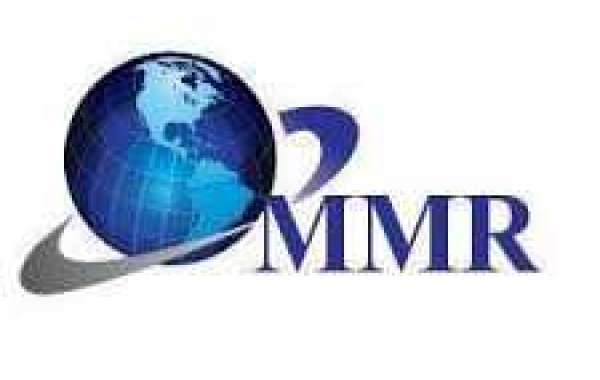Migrating to the cloud has become a strategic imperative for businesses seeking agility, scalability, and cost-efficiency. Azure Migration Services offer a comprehensive suite of tools and resources designed to facilitate a smooth transition to Microsoft's Azure cloud platform. This article explores the benefits of Azure migration, the steps involved, and how leveraging these services can optimize your cloud journey.
Understanding Azure Migration Services
Azure Migration Services encompass a range of tools, best practices, and guidance to assist organizations in migrating their workloads to the Azure cloud. These services are tailored to minimize disruption, ensure data integrity, and optimize performance during and after the migration process.
Key Components of Azure Migration Services
- Azure Migrate
- Discovery and Assessment: Tools to discover on-premises workloads and assess their readiness for migration.
- Server Migration: Capabilities to migrate physical, virtual, and cloud-based servers to Azure.
- Database Migration: Tools to migrate databases from various platforms to Azure SQL Database.
- Web App Migration: Assistance in moving web applications to Azure App Service.
- Azure Site Recovery
- Ensures business continuity by replicating workloads running on physical and virtual machines to Azure.
- Azure Database Migration Service
- Facilitates seamless database migrations with minimal downtime from on-premises or other cloud environments to Azure.
- Azure Data Box
- A secure and efficient way to transfer large amounts of data to Azure via physical storage appliances.
Benefits of Azure Migration
Scalability and Flexibility
Azure provides virtually limitless scalability, allowing businesses to quickly adjust their resources based on demand. This flexibility is crucial for supporting growth and handling variable workloads.
Cost-Efficiency
Migrating to Azure can significantly reduce infrastructure and operational costs. Pay-as-you-go pricing models ensure you only pay for the resources you use, while advanced cost management tools help optimize spending.
Enhanced Security
Azure offers robust security features, including advanced threat detection, identity management, and compliance certifications. Migrating to Azure ensures your data and applications are protected by industry-leading security measures.
Improved Performance
Azure's global network of data centers ensures low latency and high availability. The platform's performance monitoring and optimization tools help maintain optimal application performance.
Business Continuity
Azure's built-in disaster recovery solutions, such as Azure Site Recovery, ensure that your business can continue to operate smoothly in the event of an outage or disaster.
Steps in the Azure Migration Process
- Discovery and Assessment
The first step in any migration is to understand your current environment. Azure Migrate provides tools to discover on-premises servers, applications, and data, and assess their readiness for migration. This phase involves:
- Inventory Collection: Gathering detailed information about your current IT assets.
- Compatibility Assessment: Evaluating the compatibility of your workloads with Azure services.
- Cost Estimation: Estimating the cost of running your workloads in Azure.
- Planning
Once the assessment is complete, the next step is to plan the migration. This involves:
- Migration Strategy: Defining the overall migration approach, including rehosting, refactoring, rearchitecting, or rebuilding applications.
- Timeline and Milestones: Establishing a timeline and key milestones for the migration process.
- Resource Allocation: Identifying the resources and personnel required for the migration.
- Migration
With a solid plan in place, the actual migration can begin. Azure Migration Services support various types of migrations, including:
- Server Migration: Using tools like Azure Migrate: Server Migration to move physical and virtual servers to Azure.
- Database Migration: Leveraging Azure Database Migration Service to migrate databases with minimal downtime.
- Application Migration: Moving web applications to Azure App Service for better scalability and management.
- Optimization and Modernization
Post-migration, it's essential to optimize and modernize your workloads to fully leverage Azure's capabilities. This involves:
- Performance Tuning: Using Azure Monitor and other tools to optimize application performance.
- Cost Management: Implementing cost management practices to ensure efficient use of resources.
- Security Enhancement: Continuously monitoring and enhancing security measures to protect your data.
Azure Migration Case Studies
Case Study 1: Financial Services
A leading financial services company needed to modernize its IT infrastructure to improve agility and reduce costs. By migrating its core applications and databases to Azure, the company achieved:
- 40% Reduction in Infrastructure Costs: Significant savings from moving to a pay-as-you-go model.
- Enhanced Security: Leveraging Azure's advanced security features to protect sensitive financial data.
- Improved Agility: Ability to quickly scale resources based on business needs.
Case Study 2: Healthcare Provider
A large healthcare provider faced challenges with managing on-premises data and ensuring regulatory compliance. Through Azure Migration Services, the provider was able to:
- Ensure Compliance: Meet healthcare regulations with Azure's compliance certifications.
- Improve Data Management: Centralize patient data in a secure, scalable cloud environment.
- Enhance Patient Care: Utilize Azure's analytics capabilities to gain insights into patient care and improve outcomes.
Conclusion
Migrating to Azure is a strategic move that can drive significant benefits for your organization. With the right approach and the support of Azure Migration Services, you can ensure a seamless transition to the cloud, unlocking enhanced scalability, cost-efficiency, security, and performance. By following the structured migration process of discovery, planning, migration, and optimization, you can fully realize the potential of the Azure cloud platform.








